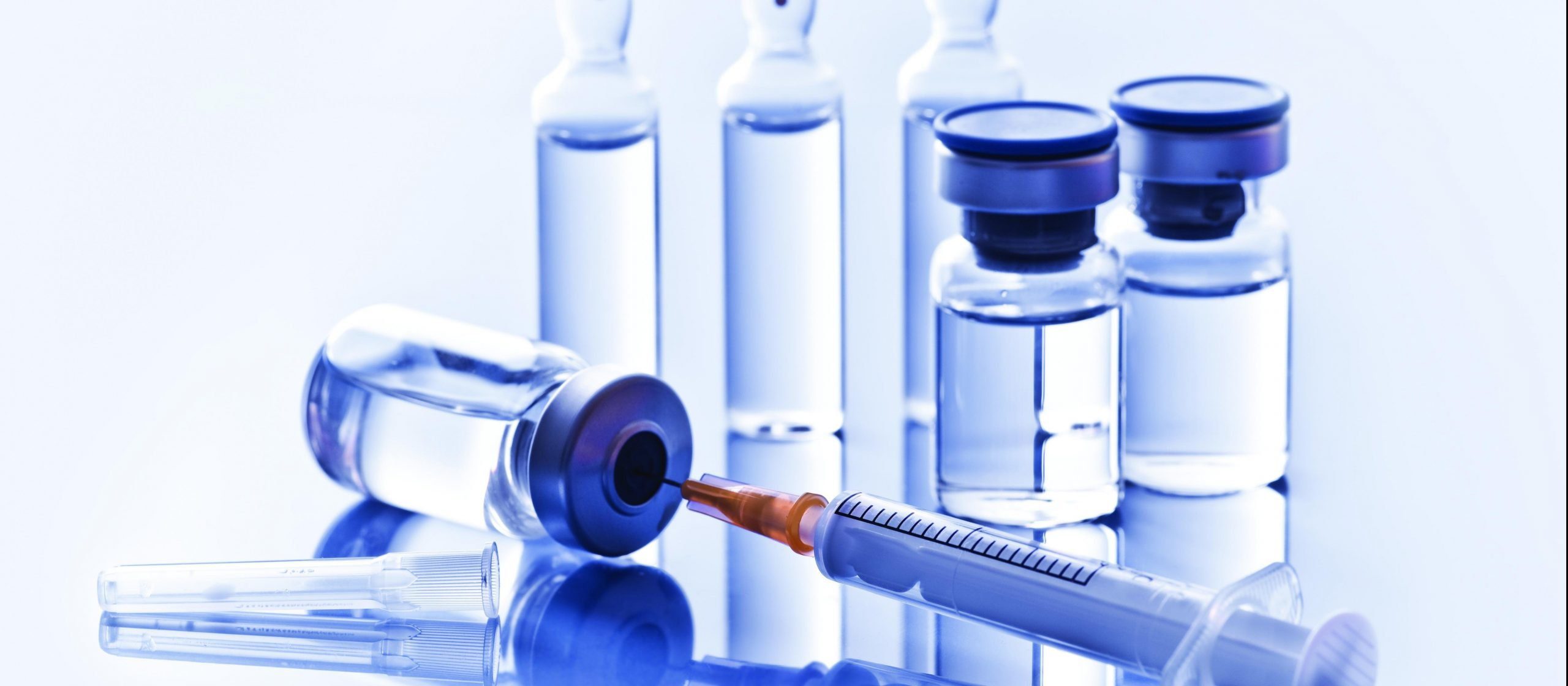
Uvax Bio Preps to Take HIV Vaccine into the Clinic
By Mark Terry
May 2, 2023
Uvax Bio, headquartered in Newark, Del., recently published preclinical results in Nature Communications showing the efficacy of its HIV vaccine candidate. With the backing of the National Institutes of Health (NIH), the company is prepping an Investigational New Drug (IND) application to take the vaccine into the clinic in early 2024.
Jiang Zhu, co-founder and CSO, and Kevin O’Neill, senior vice president of corporate strategy, took time to speak with BioBuzz about the cutting-edge technology platform the company is leveraging and where they hope to go in the near future.

The company was founded in 2018, a spinout of technology from Zhu’s lab in the Department of Integrative Structural and Computational Biology at Scripps Research. The technology is called a single-component self-assembling protein nanoparticle (1c-SApNP) platform vaccine technology.
“Right now we have a path for about 12 different viruses. They’re all nanoparticle vaccines and we are actively moving a few into clinical trials,” Zhu said.
A nanoparticle vaccine candidate against SARS-CoV-2 was clinical trial-ready, Zhu said, noting wryly that there is probably no market for that at the moment.
“We have another vaccine, which is a collaboration with the NIH for an HIV vaccine,” Zhu said.
Only minutes before speaking with BioBuzz, Zhu and other company executives had been on a call with various government agencies and the HIV Vaccine Trials Network in Seattle to discuss the clinical trial design concept.

O’Neill notes that the company is “completing the IND-enabling studies right now and pulling together various other components to support an IND, which will be targeted maybe for the fourth quarter of this year with a potential start of the trial in the first quarter of next year. But all that is really dependent on how all these interim steps fall into place and whether they stay on time. But it looks like it will be a 2024 study. The NIH is on board in terms of providing the sources to do the study and we’ll be working with their clinical trial partner, the HIV Vaccine Trials Network (HVTN).”
In describing the technology used for this HIV vaccine, Zhu compares it to what he calls “the most effective vaccine,” for human papillomavirus (HPV), for cervical cancer in women.
“The studies have shown that it can protect against HPV for life. It is actually a big, really beautiful protein ball with viral antigens on the surface. It is widely considered the most successful, most efficacious vaccine on the market. And it’s totally safe. It’s a pure protein shell without any viral components, unlike the activated or attenuated virus vaccines, which have the entire virus.”
Uvax Bio’s technology uses rational design to engineer tiny protein nanoparticles that display multiple copies of the vital antigen. In the case of the HIV vaccine candidate, it displays multiple copies of HIV’s envelope glycoprotein (Env), which mimics HIV particles, creating a strong immune response in hosts without causing HIV infection.
Zhu noted that many viruses have unstable proteins, partly because they often change when they infect cells.
“So when I look at the protein shells, I wondered if it’s possible, by using some naturally existing bacterial enzymes that can automatically form a protein ball, we can take advantage of that interesting activity of these bacterial proteins and design a stable protein shell to display or deliver vaccines for these viruses, which naturally don’t have a protein shell,” Zhu said.
After a significant amount of engineering, Zhu and his team were able to design these self-assembling vaccines. “These are all by design. What happens is another critical component of our vaccine strategy. First is a rational design of the viral antigen. The second component is multi-layered self-assembling protein nanoparticles. Together we have our vaccine. Our final vaccine essentially is encoded in one gene. That’s the beauty of it. I like things to be beautiful,” Zhu said.
During the vaccine manufacturing process, Zhu said, they throw the single piece of DNA plasmid into a cell line and a few days later the cells will create a single polypeptide chain. That polypeptide chain begins to fold itself to form the antigen, the head and the particle-forming unit and other components.
“And when they assemble the particle-forming units, they touch each other, and they start to form this protein shell. And then outside the shell, the antigens start to form their natural form. And on the inside of these multilayers, they also begin to lock themselves into different shells.”
The result is the protein ball Zhu was describing earlier, that has HIV antigens on its surface. Another component is flexible sugar molecules dubbed glycans, which typically cover Env on the real virus. In this new rational-design vaccine, the glycans are shortened, which allows the antigens to be more fully exposed to the human immune system to stimulate functional antibodies.
The company’s pipeline, currently all preclinical, includes vaccines against Hepatitis C, RSV, hMPV, influenza, parainfluenza, Zika, Dengue and others. With SARS-CoV-2 on the back-burner, after the HIV vaccine, the next product the company is hoping to move into the clinic is a vaccine against influenza.
“The third vaccine candidate will be a universal flu vaccine. Hopefully not only for seasonal flu, but also for the potential pandemic. The emerging trends right now are for a bird flu. So the next candidate will be a universal flu vaccine,” Zhu said.
Meanwhile, the rest of the year looks to be focused on the additional preclinical studies for the HIV vaccine and the IND application.
“We have a draft protocol and that’s under review. It’s a typical vaccine Phase I study, which is primarily focused on safety and reactogenicity, measuring to ensure that the vaccine is safe and that we see the same thing we saw in animal studies. We’ll also be collecting other data on immune response and things like that as secondary endpoints,” O’Neill said.
The company is actively working with Johnson & Johnson’s Innovation Center, JLABS. It is also in partnership with the NIH. O’Neill said, “We’ve also been accepted into a program called Blue Knight, which is BARDA’s sort of incubator support network with companies that particularly have technologies that may be of interest in biodefense.”
Blue Knight is a collaboration between J&J Innovation and the Biomedical Advanced Research and Development Authority (BARDA), part of the Administration for Strategic Preparedness and Response at the U.S. Department of Health and Human Services. Blue Knight focuses on “anticipating potential health security threats, activating the global innovation community, and amplifying scientific and technological advancements with the aim to prepare for and respond to our rapidly evolving global health environment,” according to the Johnson & Johnson Innovation website.
Zhu says he likes to compare the company’s technology to SpaceX, Elon Musk and Tom Mueller’s space and rocket company.
“I think in the vaccine space, this is really the most advanced platform technology. If you look at other vaccine approaches, we have seen a lot about vector-based vaccines, mRNA vaccines, and some protein vaccines, but mostly mRNA vaccines during the pandemic. Those really served to end the pandemic. But I think there is a consensus forming, not only in the industry but also at the government level, that you need protein vaccines. And this technology is definitely the most advanced, most effective form of protein vaccine. This is a future vaccine platform that can really solve a lot of critical disease problems.”
- About the Author
- Latest Posts
Mark Terry is a freelance writer, editor, novelist and ghostwriter. He holds a degree in microbiology & public health and spent 18 years in infectious disease research and clinical and research genetics prior to his transition to a writing career. His areas of expertise include biotechnology, pharma, clinical diagnostics, and medical practice management. He has written literally thousands of articles, as well as market research reports, white papers, more than 20 books, and many other written materials. He currently lives in Michigan with his family.








